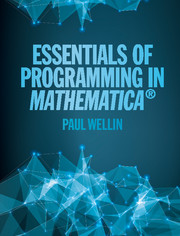9 - Program optimization
Published online by Cambridge University Press: 05 December 2015
Summary
We should forget about small efficiencies, say about97% of the time: premature optimization is the root of all evil.
— DONALD E. KNUTHWhen you first start to program your emphasis is usually on correctness, that is, getting your programs to run and return accurate and error-free results - and rightly so. There is little point in trying to speed up a program that returns incorrect answers! You develop your programs, prototyping with simple inputs so that you can see at a glance how things are progressing. At some point in the development process you start to increase the size or complexity of the inputs to your program and, if all goes well, the program scales well. But commonly, there are bottlenecks at various stages of the computation that slow things down; or there may be a large increase in the amount of memory needed to represent or store an expression or result. Some of these situations may be unavoidable, but often you can find optimizations that improve the efficiency and running time of your programs. This chapter introduces some of the optimization principles to think about both during the development process and after your programs are complete and you are satisfied that they produce the desired output.
How, you might ask, does one quantify efficiency? There are two measures we will focus on - timing and memory footprint. The importance of these two measures is highly subjective. Squeezing another tenth of a second out of a computation that is only going to be run once or twice does not make a lot of sense. However, if that computation is part of a loop that is going to be evaluated thousands of times, little things really start to add up. You will be the best judge of where to focus your efforts.
- Type
- Chapter
- Information
- Essentials of Programming in Mathematica® , pp. 345 - 378Publisher: Cambridge University PressPrint publication year: 2015

